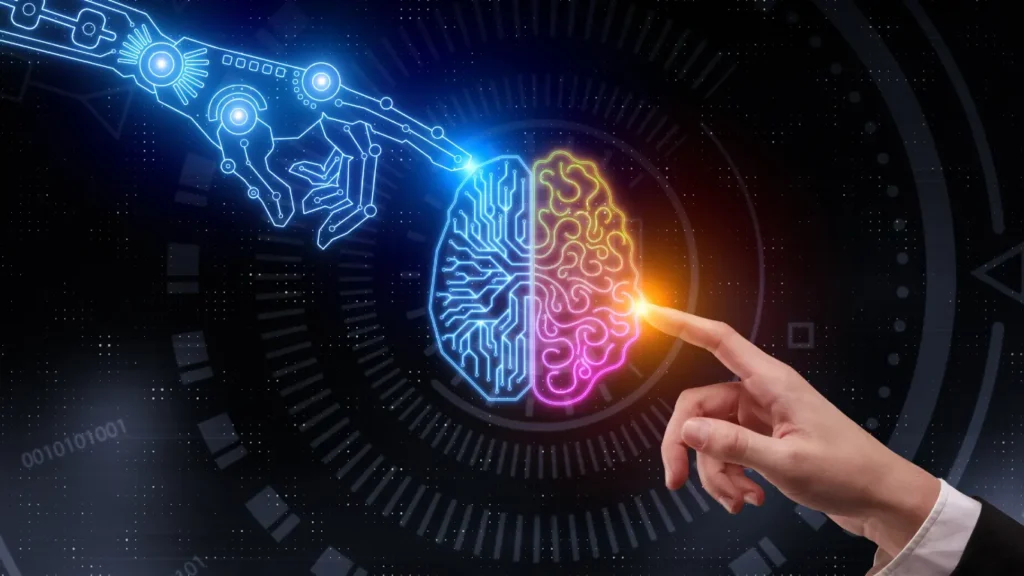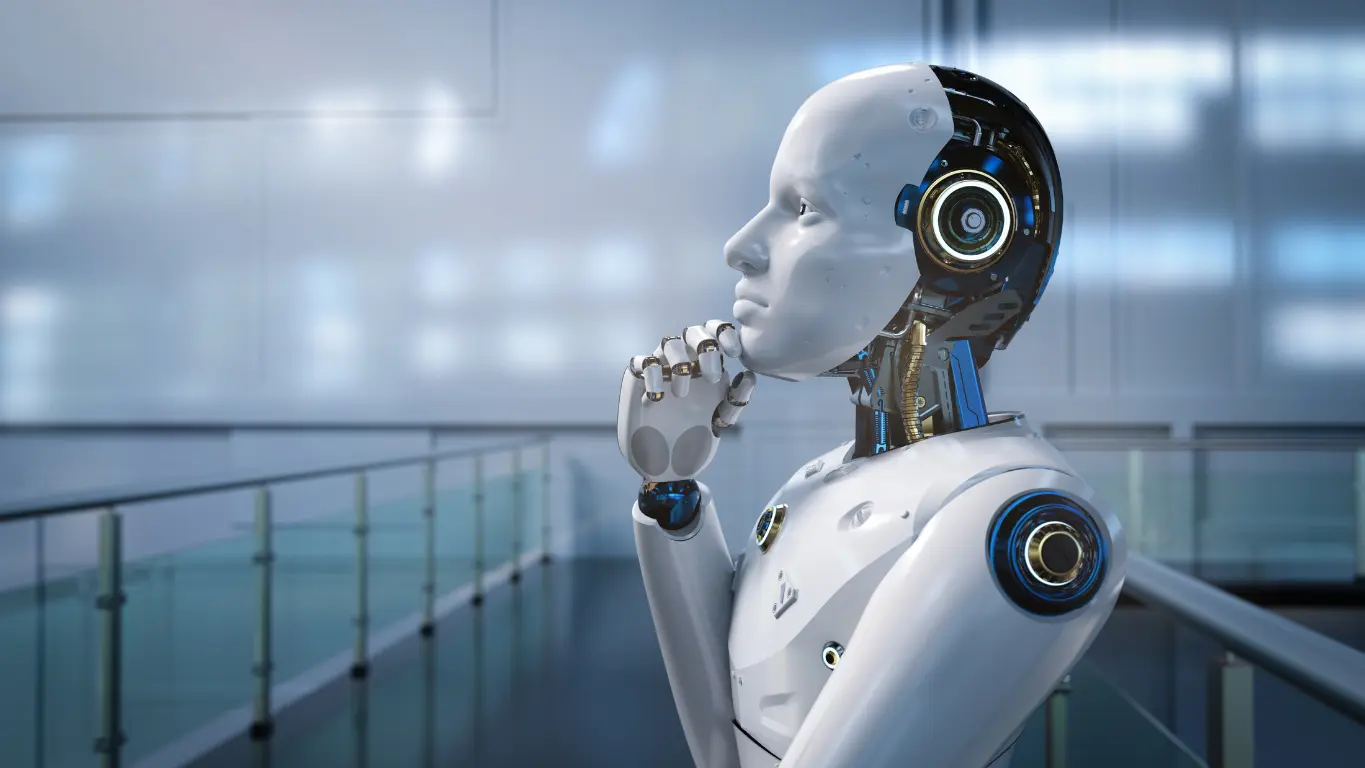
Artificial Intelligence (AI) has moved from being a vision of the future to a force that is reshaping industries, economies, and daily life. Behind this transformation are the domains of AI—highly specialized subdomains that address distinct aspects of intelligence and problem-solving. Getting familiar with the domains of AI is important for anyone seeking to know how AI works and where it’s going.
The five main domains of AI are Machine Learning, Natural Language Processing (NLP), Computer Vision, Robotics, and Expert Systems. Each has a unique function, but they tend to overlap to form strong, real-world applications. This blog delves into these five key domains of AI, examining their methods, uses, challenges, and potential future.
Machine Learning: The Heart of AI
Machine Learning (ML) is perhaps the most fundamental of the domains of AI. ML allows systems to learn from examples and get better over time without being specifically coded. ML relies on three essential methods:
Supervised Learning: Algorithms learn from labeled information to predict outcomes, like predicting diseases from radiology images (Harvard Medical School).
Unsupervised Learning: The method finds structure in unlabeled data, like grouping customers into targeted marketing clusters (MIT Technology Review).
Reinforcement Learning: Systems learn by experimentation, being rewarded or penalized, as autonomous cars learn to drive on roads (DeepMind).
Machine Learning enables a vast variety of applications, from the recommendation system on Netflix to identifying fraudulent transactions in banks. For example, TV streaming services observe what people watch to recommend content, while banks utilize ML to mark suspicious transactions. But it is confronted with issues such as biased data, which can distort outcomes, and transparent decision-making—users need to understand why an algorithm made a decision. As one of the most vibrant domains of AI, Machine Learning keeps evolving, with trends such as Explainable AI (XAI) seeking to make models explainable (IBM AI Ethics).
Quick Reference:
| Techniques | Applications | Challenges |
|---|---|---|
| Supervised Learning | Predictive analytics, fraud detection | Data bias, interpretability |
| Unsupervised Learning | Customer segmentation, anomaly detection | Scalability, data quality |
| Reinforcement Learning | Autonomous systems, gaming | Complexity, reward design |
Natural Language Processing: Decoding Human Language
Natural Language Processing (NLP) is the domain of AI that allows machines to read, interpret, and produce human language. It bridges the gap between human communication and machine understanding, driving tools we use every day:
Chatbots and Virtual Assistants: Siri and Alexa employ NLP to answer voice commands, making life easier (Stanford NLP Group).
Sentiment Analysis: Businesses review customers’ feedback to measure brand attitude, which allows them to adjust strategies (Harvard Business Review).
Machine Translation: Google Translate bridges language gaps in real time, bringing people together across the world (Google AI Blog).
NLP is based on methods like tokenization (text segmentation into units), sentiment analysis, and language modeling. Recent breakthroughs in deep learning, especially transformer architectures like those that power ChatGPT, have greatly enhanced its accuracy. Still, there are challenges—machines get stuck on context, sarcasm, and cultural sensitivities. Think of a chatbot misinterpreting a sarcastic “Great job!” as actual praise! As a critical domain of AI, NLP’s future aims to make human-machine interactions smoother and more intuitive.
At a Glance:
| Techniques | Applications | Challenges |
| Tokenization | Chatbots, virtual assistants | Contextual understanding |
| Sentiment Analysis | Brand monitoring, customer feedback | Sarcasm detection, ambiguity |
| Machine Translation | Language translation services | Cultural nuances, rare languages |
Computer Vision:
Image Classification: Tagging images, like recognizing animals in pictures (Google Research).
Object Detection: Locating objects in images, important for self-driving cars detecting pedestrians (Tesla AI).
Facial Recognition: Recognizing people, applied in security and authentication systems (National Institute of Standards and Technology).
This domain of AI has revolutionary uses across sectors. In medicine, it helps detect diseases early through medical imaging (Mayo Clinic). In manufacturing, it maintains product quality through defect inspection. Retail applies it to cashier-less shopping such as Amazon Go. Ethical issues such as privacy (who’s monitoring?) and bias in face recognition (misidentifying specific groups) are major challenges. The future of this domain of AI holds sharper precision and convergence with areas such as Robotics for innovations like autonomous drones.
Snapshot:
| Techniques | Applications | Challenges |
| Image Classification | Medical imaging, quality control | Data labeling, accuracy |
| Object Detection | Autonomous vehicles, surveillance | Real-time processing, occlusion |
| Facial Recognition | Security, authentication | Privacy issues, bias |
Robotics: AI in the Physical World
Robotics is the domain of AI that marries artificial intelligence with mechanical engineering to build machines that can execute tasks independently. It encompasses many types:
Industrial Robots: Make manufacturing work like welding and assembly more efficient (Boston Dynamics).
Service Robots: Help with healthcare or hospitality, e.g., delivery robots in hospitals (IEEE Robotics and Automation Society).
Humanoid Robots: Imitate human behavior, such as Boston Dynamics’ robots.
Difficulties include high costs and safety concerns. The future of this domain of AI looks toward collaborative robots (cobots) that operate in tandem with humans.
Overview:
| Techniques | Applications | Challenges |
| Perception (Vision) | Navigation, object manipulation | Sensor reliability, variability |
| Planning and Control | Autonomous movement, task execution | Real-time decisions, safety |
| Human-Robot Interaction | Collaborative tasks, service roles | User trust, communication |
Expert Systems: Simulating Human Expertise
Expert Systems are a domain of AI focused on mimicking human decision-making in particular areas. They employ:
Knowledge Bases: Pre-stored expert data, e.g., medical procedures (World Health Organization).
Inference Engines: Rules to manipulate information and make decisions, simulating human logic.
While newer AI like Machine Learning is replacing them, Expert Systems remain useful where structured knowledge is essential, such as legal or tech support.
Breakdown:
| Techniques | Applications | Challenges |
| Knowledge Engineering | Medical diagnosis, investment advice | Maintenance, knowledge acquisition |
| Rule-Based Reasoning | Troubleshooting, decision support | Uncertainty, scalability |
| User Interface Design | Interactive systems, consultation | Usability, accessibility |
Conclusion: The Collective Power of AI Domains
The domains of AI—Machine Learning, NLP, Computer Vision, Robotics, and Expert Systems—form the foundation of artificial intelligence. By understanding these domains of AI, we can better appreciate their collective impact and harness their potential to address global challenges. As AI evolves, these domains of AI will remain at the forefront, pushing the boundaries of what technology can achieve.

